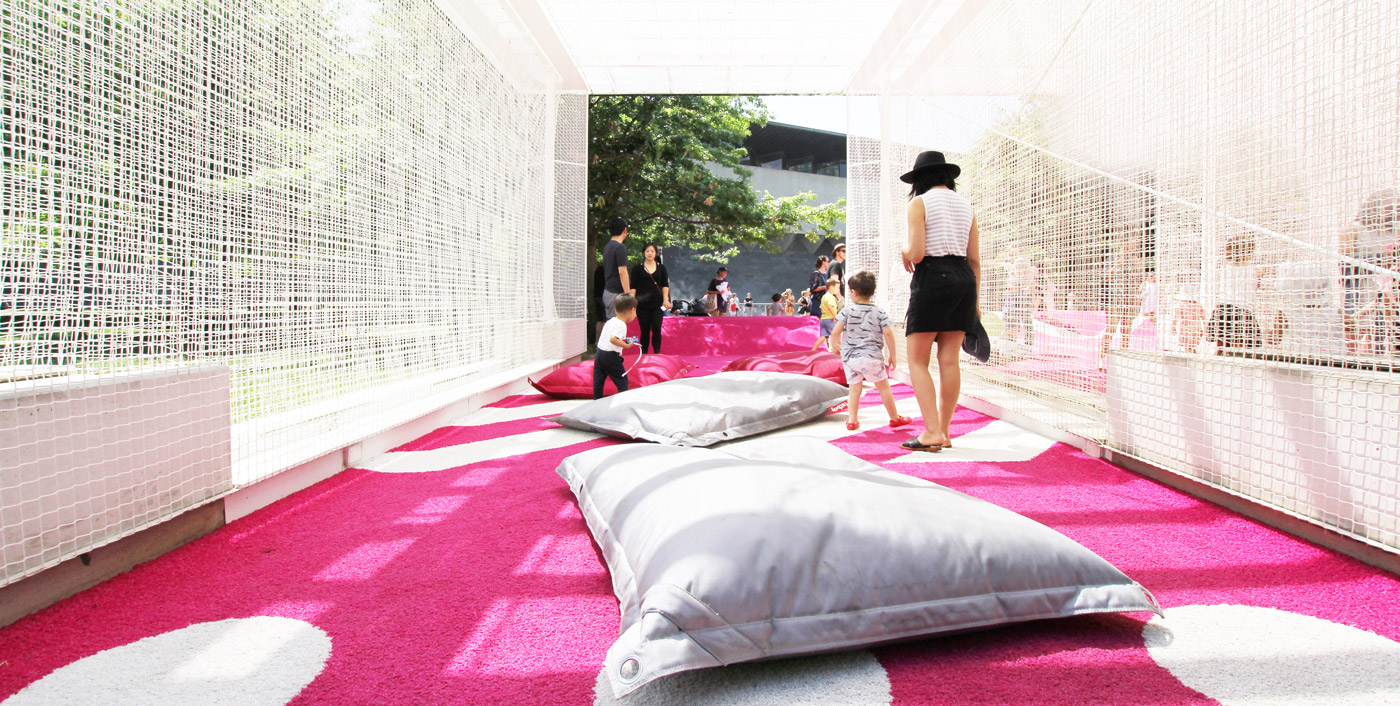Public art and public space have been naturally merging over time in many ways. Consciously merging these fields could improve public art outcomes, whilst also generating inspiring public realm outcomes in Western Australia.
I recently posted a piece discussing public art in Western Australia which received a diverse range of feedback from artists, arts administrators, architects and members of local communities. We now have significant quantities of public art commissioned through local and state government Percent for Art Schemes however the quality of many sculptural works in particular, are poor. Strengthening the supporting framework for artists will improve outcomes over time however this is a long term aspiration requiring sustained commitment.
Meetings of the City of Vincent Arts Advisory Group recently floated the option of allowing public space to be provided in place of public art as part of its Percent for Public Art Scheme. My initial response was that it was a reaction to the quality of public art currently being generated and amounted to 'giving up' on public art. I'm also confident if this option was offered through Percent for Art Schemes a high proportion of developers, who are the main group participating in these schemes, would adopt it potentially resulting in the loss of public art all together.
At this time I was also involved in the City of Vincent's Parklet Program which is an initiative reclaiming parking bays along town centre streets for use as micro public spaces. Our Parklet located on Angove Street in North Perth used the timber off-cuts from a larger Sorrento Performance Deck project, to create a small public space incorporating bench seating as well as integrated planter boxes housing native plants. Sculptural by nature, our Parklet aimed to replicate the stacked formations of the offcuts when they were first noticed in a waste pile on site.
A number of people suggested they viewed our Parklet as public art which I hadn't previously considered. This raised a number of questions. Firstly, at what point do considered public spaces and their one off elements accommodating functional uses such as seating, canopies and playground equipment become public art? Secondly who would create this form of public art? Architects typically think public art doesn't respond to or enhance the surrounding built environment. Artists typically think public art created by architects is too 'architectural', minimal and lacking in artistic meaning.
Leading contemporary public realm projects integrate public art, are colourful, sculptural as well as engaging. They possess both functional and artistic qualities. The Highline in New York designed by Field Operations and Diller Scofidio + Renfro and Hart's Mill Surrounds in Port Adelaide by Aspect Studio and Mulloway Studio are good examples. As are the sculptural seats recently designed by Jurgen Mayer H and constructed by Urban Art Projects in New York's Time Square Plaza. FORM's PUBLIC PLATFORM prototyping festival, held earlier this year in Claremont explored the creation of public space activation interventions many of which also possessed embedded historical and cultural meaning.
There is also a long tradition of pavilions, designed by architects and designers, commissioned by art galleries. Serpentine Galleries in London, MoMA in New York as well as the National Gallery of Victoria in Melbourne all run annual pavilion commissions which generate beautiful temporary works melding a sense of enclosure, structure, landscape and art. The pavilion typology could inform the creation of permanent public spaces outside the realms of gallery grounds.
Precedents exist however we don't have quality examples merging public art and public space in Western Australia. Some of our ugliest urban infrastructure, high voltage electricity pylons or freeway underpasses could also be opportunities for transformation. Funding allocated for public art through local and state government Percent for Art Schemes could justifiably be used in this way if outcomes achieve a level of artistic exploration as well as accommodating a functional role. Systems would need to be established to ensure this doesn't result in bland public spaces with little artistic integrity, especially in the hands of property developers.
This way of thinking about public art requires further consideration. The best outcomes will inevitably be generated by collaborations involving artists, architects, landscape and furniture designers as well as creatives from other fields. Leading public realm outcomes, the pavilion typology and FORM's PUBLIC PLATFORM all show we could generate inspiring public spaces embodying a level of artistic meaning and integrity. The two fields are presently considered separately and viewed as independent options.
After all, public art can only be enjoyed if we have engaging public spaces people want to spend time in so the two fields are inherently linked. Rather than public art being an element in public space can public space itself become public art?
November 2016
Image - 'Haven't you always wanted...?' by M@ Studio Architects commissioned as part of the NVG Architecture Pavilion Commissions






